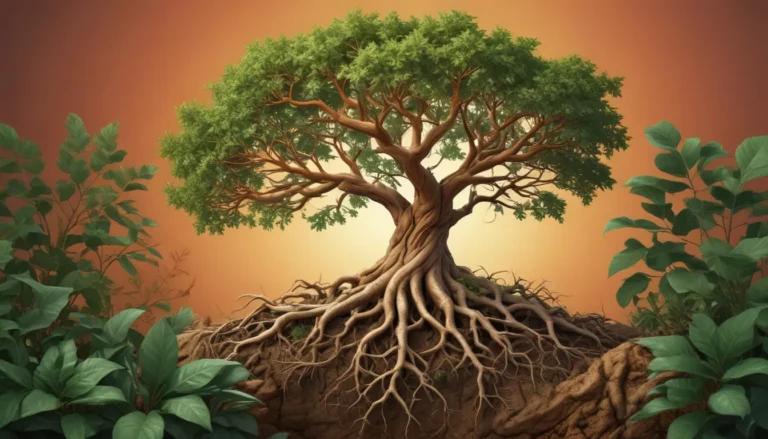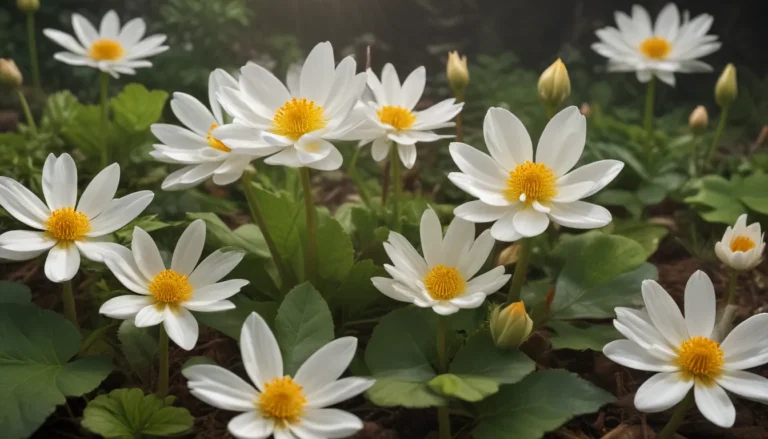The pictures we use in our articles might not show exactly what the words say. We choose these pictures to make you interested in reading more. The pictures work together with the words but don’t take their place. The words still tell you the important facts.
Willow trees, with their graceful beauty and unique characteristics, have enchanted plant enthusiasts and nature lovers alike for centuries. From their medicinal properties to their role in folklore and mythology, willows continue to amaze and inspire. In this article, we will explore 11 unbelievable facts about willow that will leave you in awe of this incredible tree. So, sit back, grab a cup of tea, and prepare to uncover the captivating world of willows!
The Medicinal Marvel of Willow Trees
The Willow tree, scientifically known as Salix, is not just a beautiful tree but also a powerhouse of medicinal properties. Its bark contains a compound called salicin, which is used to make aspirin, a popular pain reliever and anti-inflammatory drug. For centuries, willow bark has been utilized to alleviate pain, reduce fever, and promote overall well-being.
Rooted in Strength: The Power of Willow Roots
Willow trees are renowned for their robust root systems, which allow them to thrive in diverse soil conditions, including wet and dry areas. These strong roots play a vital role in preventing soil erosion and stabilizing the land, making willows a popular choice for planting near bodies of water.
Weaving Wonders: Willow Branches and Basketry
The flexible branches of Willow trees have been a staple in the ancient art of basket weaving for centuries. Their supple nature makes them ideal for creating intricate and durable baskets that have stood the test of time. This traditional craft continues to be cherished and practiced in cultures around the world.
Symbol of Resilience and Healing: The Willow Tree’s Significance
In many cultures, the Willow tree symbolizes resilience and healing, embodying the strength to overcome challenges. Its ability to bend and adapt to harsh conditions reflects the tree's enduring spirit. The delicate leaves and graceful branches of the Willow evoke a sense of tranquility and hope.
A Haven for Wildlife: The Biodiversity of Willow Trees
The lush foliage and abundance of branches in Willow trees provide a sanctuary for various wildlife species, including birds, insects, and small mammals. Birds find shelter in the branches, while insects and animals thrive amidst the leaves and bark. Willows play a crucial role in supporting biodiversity and ecosystem health.
Dyeing Delights: Natural Dyes from Willow Bark
The bark and leaves of the Willow tree offer a sustainable source of natural dyes, historically used to create shades of yellow and brown. This eco-friendly alternative to synthetic dyes continues to be embraced by artisans and textile enthusiasts seeking vibrant colors from nature.
Strength and Flexibility: The Versatile Wood of Willow
Willow tree wood is prized for its strength and flexibility, making it a preferred choice for crafting furniture, baskets, and musical instruments such as guitars and violins. The supple nature of Willow wood allows for intricate carving and exquisite craftsmanship.
Timeless Remedies: Willow Bark in Traditional Medicine
In addition to salicin for aspirin, Willow bark has been a cornerstone of traditional medicine for its anti-inflammatory and pain-relieving properties. Whether brewed into a tea or used topically, Willow bark offers relief for joint pain, headaches, and skin conditions, showcasing its medicinal prowess.
Rapid Growth Marvels: The Speedy Rise of Willow Trees
Willow trees are renowned for their rapid growth rate, with some species capable of growing up to 10 feet in a single year. This makes them an excellent choice for reforestation projects and for providing quick shade and privacy in gardens, showcasing their versatility and resilience.
Folklore and Enchantment: The Mystical Aura of Willow Trees
Throughout history, the Willow tree has been steeped in folklore and mythology, symbolizing magic, wisdom, and enchantment in various cultures. Its mystical reputation as a healing tree with mystical powers has captured the imagination of storytellers and artists across the ages.
Propagation Magic: Growing Willow Trees from Cuttings
One fascinating fact about Willow trees is their ability to grow from cuttings, a simple yet effective method of propagation. By placing a Willow branch in water or soil, it can develop roots and flourish into a new tree. This technique is widely used by gardeners and arborists to propagate and cultivate Willows efficiently.
Embracing the Essence of Willow: A Conclusion
Willow trees encompass a wealth of remarkable qualities and benefits, from their medicinal prowess to their ecological contributions. Whether providing shade in gardens or serving as a symbol of resilience, Willows hold a special place in the natural world and human history. Their serene beauty and enduring charm continue to captivate hearts and minds, inspiring admiration and reverence for these remarkable trees.
As you encounter a willow tree in your surroundings, take a moment to appreciate its beauty and contemplate the mysteries concealed within its branches. The world of willows is a wondrous realm waiting to be explored, offering endless opportunities for learning and discovery. Join us as we unveil the enchanting world of willows, where nature's wonders and human creativity intersect in harmony.
FAQs: Exploring the World of Willow
- Where do willow plants grow best?
-
Willows thrive in wet or damp soil and are commonly found near bodies of water like rivers, lakes, and swamps. They prefer areas with full or partial sun exposure.
-
Can I grow a willow tree in my backyard?
-
Yes, you can grow a willow tree in your backyard if you have sufficient space and the right growing conditions. Be mindful of their size and invasive root system.
-
Are all willow trees the same?
-
No, there are various species of willow trees, each with unique characteristics. Common types include white willow, weeping willow, and black willow, each with distinct growth habits and uses.
-
Are willow plants beneficial for the environment?
-
Absolutely! Willow trees play a crucial role in preventing soil erosion, supporting wildlife habitats, and improving water quality by absorbing pollutants.
-
Can I use willow for medicinal purposes?
-
Yes, willow bark contains salicin, similar to aspirin, and has been used for pain relief, reducing fever, and combating inflammation for centuries.
-
Can I make baskets or crafts using willow branches?
-
Willow branches are highly flexible and ideal for weaving baskets, furniture, fences, and sculptures, showcasing their versatility in craftsmanship.
-
How fast do willow trees grow?
-
Willow trees are known for their rapid growth, with some species growing 1 to 2 feet per year, making them an excellent choice for quick shade and privacy.
-
Do willow trees require a lot of maintenance?
-
Willow trees are relatively low maintenance, requiring regular pruning to control size and shape. Their invasive roots may necessitate caution near structures.
-
Are there any other uses of willow plants?
-
In addition to ornamental and medicinal uses, willow plants are prized for their vibrant branch colors, used in floral arrangements and crafts, and for crafting furniture and musical instruments.
-
Can I propagate a willow tree from cuttings?
- Yes, willow trees can be easily propagated from cuttings by planting a healthy stem in soil or water. With proper care, a new willow tree will soon take root and flourish.
-
Are there any myths or legends associated with willow trees?
- Yes, willow trees feature prominently in myths and legends symbolizing femininity, intuition, and healing. Legends suggest that hanging a lock of hair on a willow tree can bring good luck and grant wishes, adding to their mystical aura.
Immerse yourself in the enchanting world of willows, where nature's beauty and human ingenuity intertwine to create a tapestry of wonder and inspiration. Explore the wonders of willows and discover the magic hidden within their branches, inviting you to experience the timeless allure of these remarkable trees. Join us on a journey through the captivating realm of willows, where each leaf tells a story and every branch whispers a secret of nature's enduring grace and charm.






